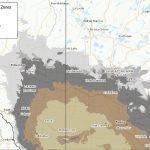Water is often the most crucial factor in controlling crop yields. The amount of water used by crops can be affected by several factors including the availability of stored soil water, amount of precipitation during the growing season, crop rooting depth and various environmental aspects such as day length, amount of solar radiation, humidity, temperature […] Read more













